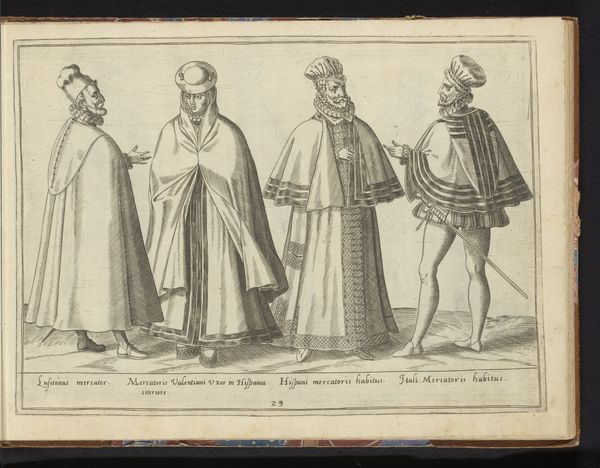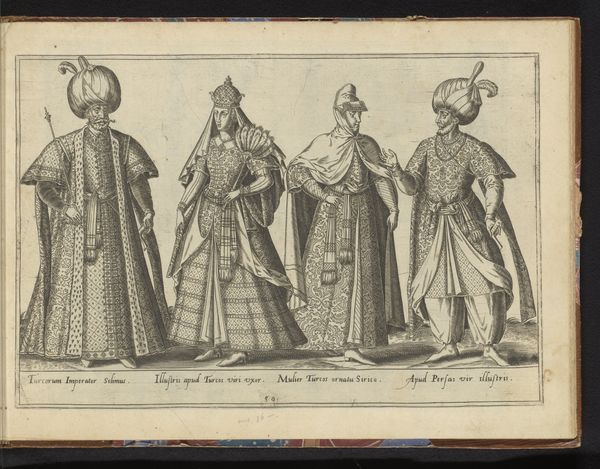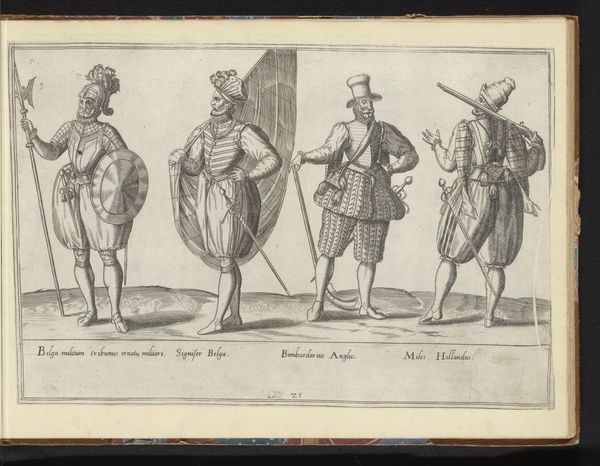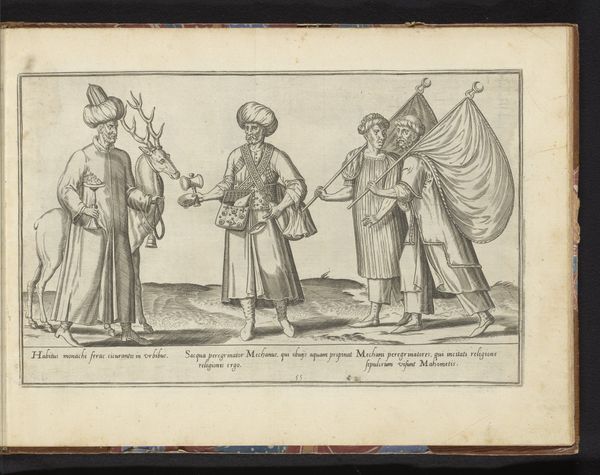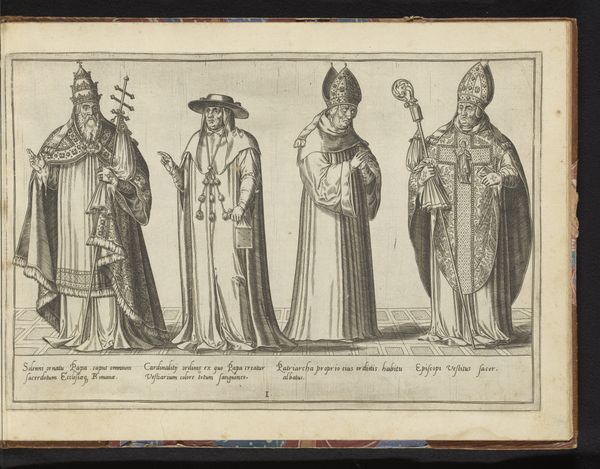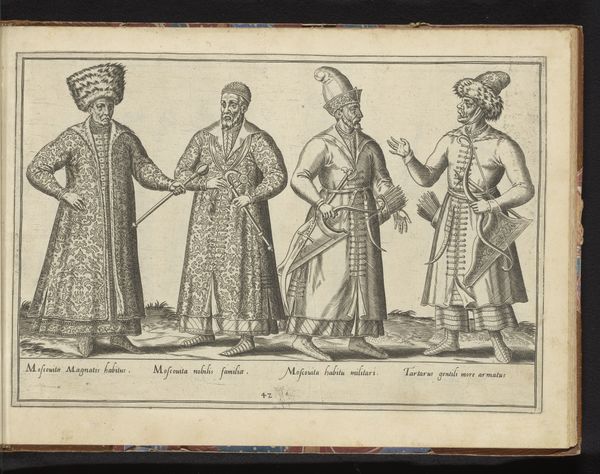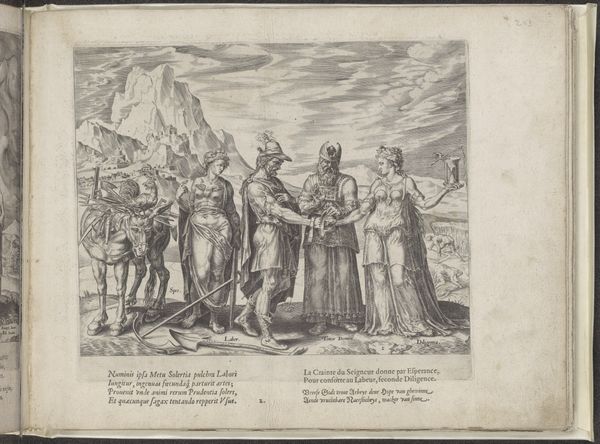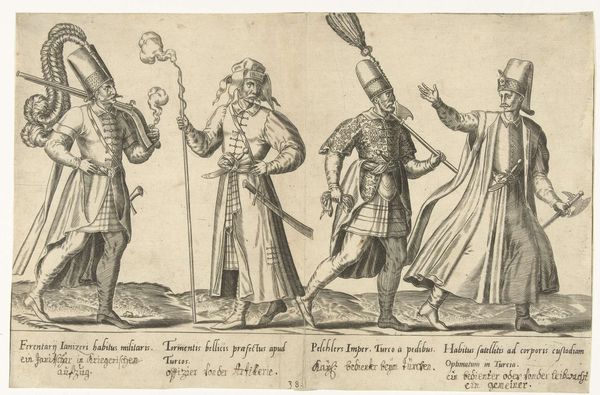
Twee Spaanse soldaten en twee geselaars met kap over het hoofd before 1581
0:00
0:00
abrahamdebruyn
Rijksmuseum
drawing, print, engraving
#
drawing
#
medieval
# print
#
figuration
#
coloured pencil
#
history-painting
#
engraving
Dimensions: height 265 mm, width 360 mm
Copyright: Rijks Museum: Open Domain
This print, "Two Spanish Soldiers and Two Flagellants with Hoods over their Heads," was made in the late 16th century by Abraham de Bruyn. It's an engraving, meaning that the image was incised into a metal plate, likely copper, with a tool called a burin. Ink was then applied to the plate, and the surface wiped clean, leaving ink only in the etched lines. Finally, the plate was pressed onto a sheet of paper, transferring the image. The sharp, precise lines of the engraving allow for a wealth of detail, from the elaborate costumes of the soldiers to the somber garb of the flagellants. The controlled nature of the medium contrasts starkly with the violent subject matter: two soldiers flank penitents, who are identifiable by the skull emblems on their robes and hoods. Engraving was a key technology for disseminating information in the early modern period. Prints like this one would have circulated widely, offering a glimpse into the culture and customs of other lands. By understanding the material process of engraving, we can appreciate how images like this one shaped perceptions and contributed to a broader understanding of the world. The print sits at the intersection of art, craft, and social commentary, challenging us to consider the power of images in shaping our understanding of history.
Comments
No comments
Be the first to comment and join the conversation on the ultimate creative platform.

